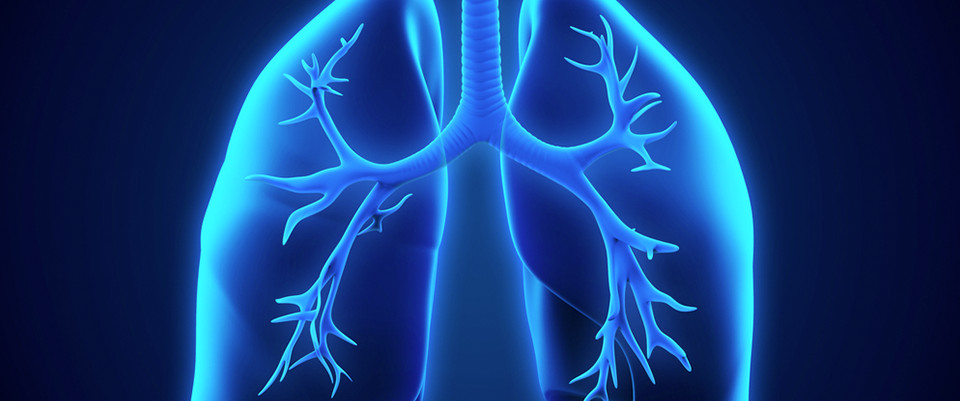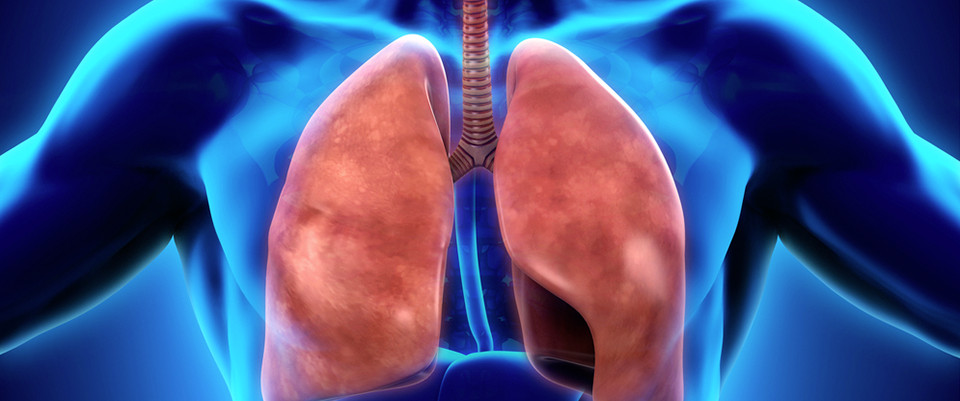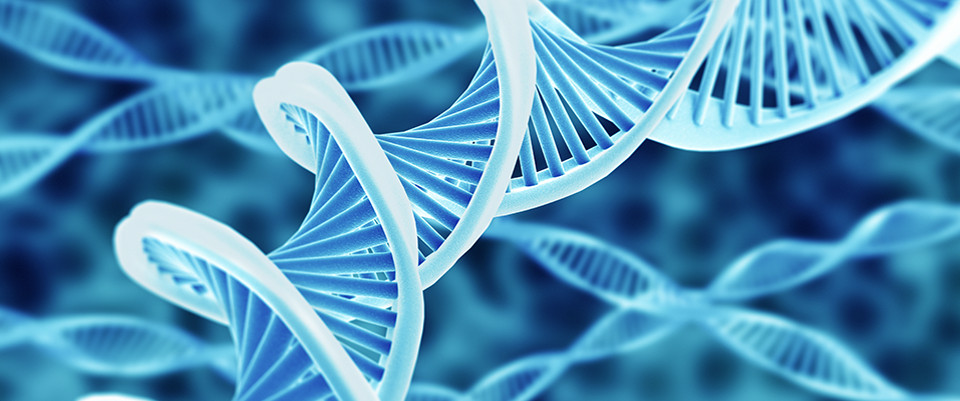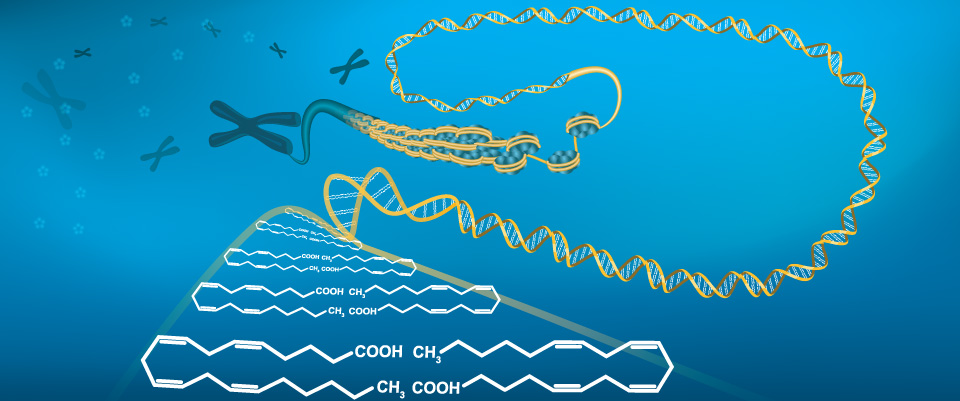PubMed
Shifts in metabolomic profiles of the parasitoid Nasonia vitripennis associated with elevated cold tolerance induced by the parasitoid's diapause, host diapause and host diet augmented with proline.
Shifts in metabolomic profiles of the parasitoid Nasonia vitripennis associated with elevated cold tolerance induced by the parasitoid's diapause, host diapause and host diet augmented with proline.
Insect Biochem Mol Biol. 2015 May 21;
Authors: Li Y, Zhang L, Chen H, Kostal V, Simek P, Moos M, Denlinger DL
Abstract
The ectoparasitoid wasp, Nasonia vitripennis can enhance its cold tolerance by exploiting a maternally-induced larval diapause. A simple manipulation of the fly host diapause status and supplementation of the host diet with proline also dramatically increase cold tolerance in the parasitoid. In this study, we used a metabolomics approach to define alterations in metabolite profiles of N. vitripennis caused by diapause in the parasitoid, diapause of the host, and augmentation of the host's diet with proline. Metabolic profiles of diapausing and nondiapausing parasitoid were significantly differentiated, with pronounced distinctions in levels of multiple cryoprotectants, amino acids, and carbohydrates. The dynamic nature of diapause was underscored by a shift in the wasp's metabolomic profile as the duration of diapause increased, a feature especially evident for increased concentrations of a suite of cryoprotectants. Metabolic pathways involved in amino acid and carbohydrate metabolism were distinctly enriched during diapause in the parasitoid. Host diapause status also elicited a pronounced effect on metabolic signatures of the parasitoid, noted by higher cryoprotectants and elevated compounds derived from glycolysis. Proline supplementation of the host diet did not translate directly into elevated proline in the parasitoid but resulted in an alteration in the abundance of many other metabolites, including elevated concentrations of essential amino acids, and reduction in metabolites linked to energy utilization, lipid and amino acid metabolism. Thus, the enhanced cold tolerance of N. vitripennis associated with proline augmentation of the host diet appears to be an indirect effect caused by the metabolic perturbations associated with diet supplementation.
PMID: 26005120 [PubMed - as supplied by publisher]
Dysfunctional glycosynapses in schizophrenia: Disease and regional specificity.
Dysfunctional glycosynapses in schizophrenia: Disease and regional specificity.
Schizophr Res. 2015 May 21;
Authors: Wood PL, Holderman NR
Abstract
BACKGROUND: Our previous lipidomics studies demonstrated elevated sulfatides, plasmalogens, and N-acylphosphatidylserines in the frontal cortex of schizophrenia subjects. These data suggest that there may be an abnormal function of glycosynapses in schizophrenia. We further examined the disease and anatomical specificity of these observations.
METHODS: We undertook a targeted lipidomics analysis of plasmalogens, sulfatides, and N-acyl-phosphatidylserines in the frontal cortex obtained from schizophrenia, bipolar, and ALS subjects and the cerebellum of schizophrenia subjects.
RESULTS: We demonstrate that sulfatides, plasmalogens, and N-acyl-phosphatidylserines are significantly elevated in the frontal cortex of patients suffering from schizophrenia and bipolar depression but not in ALS patients. These lipids were unchanged in the cerebellum of subjects with schizophrenia.
CONCLUSIONS: Our data suggest that dysfunction of oligodendrocyte glycosynapses may be specific to limbic circuits in schizophrenia and that this dysfunction is also detected in bipolar depression, suggesting that these disorders possess several common pathophysiological features.
PMID: 26004690 [PubMed - as supplied by publisher]
Interaction between AIF and CHCHD4 Regulates Respiratory Chain Biogenesis.
Interaction between AIF and CHCHD4 Regulates Respiratory Chain Biogenesis.
Mol Cell. 2015 May 20;
Authors: Hangen E, Féraud O, Lachkar S, Mou H, Doti N, Fimia GM, Lam NV, Zhu C, Godin I, Muller K, Chatzi A, Nuebel E, Ciccosanti F, Flamant S, Bénit P, Perfettini JL, Sauvat A, Bennaceur-Griscelli A, Ser-Le Roux K, Gonin P, Tokatlidis K, Rustin P, Piacentini M, Ruvo M, Blomgren K, Kroemer G, Modjtahedi N
Abstract
Apoptosis-inducing factor (AIF) is a mitochondrial flavoprotein that, beyond its apoptotic function, is required for the normal expression of major respiratory chain complexes. Here we identified an AIF-interacting protein, CHCHD4, which is the central component of a redox-sensitive mitochondrial intermembrane space import machinery. Depletion or hypomorphic mutation of AIF caused a downregulation of CHCHD4 protein by diminishing its mitochondrial import. CHCHD4 depletion sufficed to induce a respiratory defect that mimicked that observed in AIF-deficient cells. CHCHD4 levels could be restored in AIF-deficient cells by enforcing its AIF-independent mitochondrial localization. This modified CHCHD4 protein reestablished respiratory function in AIF-deficient cells and enabled AIF-deficient embryoid bodies to undergo cavitation, a process of programmed cell death required for embryonic morphogenesis. These findings explain how AIF contributes to the biogenesis of respiratory chain complexes, and they establish an unexpected link between the vital function of AIF and the propensity of cells to undergo apoptosis.
PMID: 26004228 [PubMed - as supplied by publisher]
GC-MS based metabolomics study of stems and roots of Ephedra sinica.
GC-MS based metabolomics study of stems and roots of Ephedra sinica.
J Pharm Biomed Anal. 2015 May 9;114:49-52
Authors: Lv M, Sun J, Wang M, Huang W, Fan H, Xu F, Zhang Z
Abstract
Therapeutic effects of herbal medicines differ greatly due to the use of different anatomical parts or processing methods in traditional Chinese medicine, and Ephedra sinica (ES) is just a case in point. To better understand different traditional uses of the stems (known as Mahuang, MH) and roots (known as Mahuanggen, MHG) of ES, their therapeutic material basis should be investigated. In this study, ephedrine alkaloids were profiled simultaneously with primary metabolites using GC-MS based metabolomics. Ephedrine (E) has been reported to be the major bioactive constituent in MH for the treatment of asthma. The results showed that compared with MH, MHG contained much lower levels of five ephedrine alkaloids, which may well explain that MHG has not been used as an antiasthmatic. Additionally, these pharmacologically important ephedrine alkaloids exhibited strong positive correlation with five primary metabolites. In conclusion, this study facilitates better understanding of different traditional uses of MH and MHG.
PMID: 26004227 [PubMed - as supplied by publisher]
A Protocol to Collect Specific Mouse Skeletal Muscles for Metabolomics Studies.
A Protocol to Collect Specific Mouse Skeletal Muscles for Metabolomics Studies.
Methods Mol Biol. 2015 May 24;
Authors: Gan Z, Fu Z, Stowe JC, Powell FL, McCulloch AD
Abstract
Due to the highly sensitive nature of metabolic states, the quality of metabolomics data depends on the suitability of the experimental procedure. Metabolism could be affected by factors such as the method of euthanasia of the animals and the sample collection procedures. The effects of these factors on metabolites are tissue-specific. Thus, it is important to select proper methods to sacrifice the animal and appropriate procedures for collecting samples specific to the tissue of interest. Here, we present our protocol to collect specific mouse skeletal muscles with different fiber types for metabolomics studies. We also provide a protocol to measure lactate levels in tissue samples as a way to estimate the metabolic state in collected samples.
PMID: 26003134 [PubMed - as supplied by publisher]
A tutorial review: Metabolomics and partial least squares-discriminant analysis - a marriage of convenience or a shotgun wedding.
Related Articles
A tutorial review: Metabolomics and partial least squares-discriminant analysis - a marriage of convenience or a shotgun wedding.
Anal Chim Acta. 2015 Jun 16;879:10-23
Authors: Gromski PS, Muhamadali H, Ellis DI, Xu Y, Correa E, Turner ML, Goodacre R
Abstract
The predominance of partial least squares-discriminant analysis (PLS-DA) used to analyze metabolomics datasets (indeed, it is the most well-known tool to perform classification and regression in metabolomics), can be said to have led to the point that not all researchers are fully aware of alternative multivariate classification algorithms. This may in part be due to the widespread availability of PLS-DA in most of the well-known statistical software packages, where its implementation is very easy if the default settings are used. In addition, one of the perceived advantages of PLS-DA is that it has the ability to analyze highly collinear and noisy data. Furthermore, the calibration model is known to provide a variety of useful statistics, such as prediction accuracy as well as scores and loadings plots. However, this method may provide misleading results, largely due to a lack of suitable statistical validation, when used by non-experts who are not aware of its potential limitations when used in conjunction with metabolomics. This tutorial review aims to provide an introductory overview to several straightforward statistical methods such as principal component-discriminant function analysis (PC-DFA), support vector machines (SVM) and random forests (RF), which could very easily be used either to augment PLS or as alternative supervised learning methods to PLS-DA. These methods can be said to be particularly appropriate for the analysis of large, highly-complex data sets which are common output(s) in metabolomics studies where the numbers of variables often far exceed the number of samples. In addition, these alternative techniques may be useful tools for generating parsimonious models through feature selection and data reduction, as well as providing more propitious results. We sincerely hope that the general reader is left with little doubt that there are several promising and readily available alternatives to PLS-DA, to analyze large and highly complex data sets.
PMID: 26002472 [PubMed - as supplied by publisher]
Metabolomic analysis to define and compare the effects of PAHs and oxygenated PAHs in developing zebrafish.
Related Articles
Metabolomic analysis to define and compare the effects of PAHs and oxygenated PAHs in developing zebrafish.
Environ Res. 2015 May 20;140:502-510
Authors: Elie MR, Choi J, Nkrumah-Elie YM, Gonnerman GD, Stevens JF, Tanguay RL
Abstract
Polycyclic aromatic hydrocarbons (PAHs) and their oxygenated derivatives are ubiquitously present in diesel exhaust, atmospheric particulate matter and soils sampled in urban areas. Therefore, inhalation or non-dietary ingestion of both PAHs and oxy-PAHs are major routes of exposure for people; especially young children living in these localities. While there has been extensive research on the parent PAHs, limited studies exist on the biological effects of oxy-PAHs which have been shown to be more soluble and more mobile in the environment. Additionally, investigations comparing the metabolic responses resulting from parent PAHs and oxy-PAHs exposures have not been reported. To address these current gaps, an untargeted metabolomics approach was conducted to examine the in vivo metabolomic profiles of developing zebrafish (Danio rerio) exposed to 4µM of benz[a]anthracene (BAA) or benz[a]anthracene-7,12-dione (BAQ). By integrating multivariate, univariate and pathway analyses, a total of 63 metabolites were significantly altered after 5 days of exposure. The marked perturbations revealed that both BAA and BAQ affect protein biosynthesis, mitochondrial function, neural development, vascular development and cardiac function. Our previous transcriptomic and genomic data were incorporated in this metabolomics study to provide a more comprehensive view of the relationship between PAH and oxy-PAH exposures on vertebrate development.
PMID: 26001975 [PubMed - as supplied by publisher]
metabolomics; +22 new citations
22 new pubmed citations were retrieved for your search.
Click on the search hyperlink below to display the complete search results:
metabolomics
These pubmed results were generated on 2015/05/23PubMed comprises more than 24 million citations for biomedical literature from MEDLINE, life science journals, and online books.
Citations may include links to full-text content from PubMed Central and publisher web sites.
Integrative Genomic Signatures Of Hepatocellular Carcinoma Derived from Nonalcoholic Fatty Liver Disease.
Integrative Genomic Signatures Of Hepatocellular Carcinoma Derived from Nonalcoholic Fatty Liver Disease.
PLoS One. 2015;10(5):e0124544
Authors: Frades I, Andreasson E, Mato JM, Alexandersson E, Matthiesen R, Martínez-Chantar ML
Abstract
Nonalcoholic fatty liver disease (NAFLD) is a risk factor for Hepatocellular carcinoma (HCC), but he transition from NAFLD to HCC is poorly understood. Feature selection algorithms in human and genetically modified mice NAFLD and HCC microarray data were applied to generate signatures of NAFLD progression and HCC differential survival. These signatures were used to study the pathogenesis of NAFLD derived HCC and explore which subtypes of cancers that can be investigated using mouse models. Our findings show that: (I) HNF4 is a common potential transcription factor mediating the transcription of NAFLD progression genes (II) mice HCC derived from NAFLD co-cluster with a less aggressive human HCC subtype of differential prognosis and mixed etiology (III) the HCC survival signature is able to correctly classify 95% of the samples and gives Fgf20 and Tgfb1i1 as the most robust genes for prediction (IV) the expression values of genes composing the signature in an independent human HCC dataset revealed different HCC subtypes showing differences in survival time by a Logrank test. In summary, we present marker signatures for NAFLD derived HCC molecular pathogenesis both at the gene and pathway level.
PMID: 25993042 [PubMed - as supplied by publisher]
Towards biomarker-based tests that can facilitate decisions about prevention and management of preeclampsia in low-resource settings.
Towards biomarker-based tests that can facilitate decisions about prevention and management of preeclampsia in low-resource settings.
Clin Chem Lab Med. 2015 May 20;
Authors: Acestor N, Goett J, Lee A, Herrick TM, Engelbrecht SM, Harner-Jay CM, Howell BJ, Weigl BH
Abstract
In recent years, an increasing amount of literature is emerging on candidate urine and blood-based biomarkers associated with incidence and severity of preeclampsia (PE) in pregnant women. While enthusiasm on the usefulness of several of these markers in predicting PE is evolving, essentially all work so far has focused on the needs of high-resource settings and high-income countries, resulting primarily in multi-parameter laboratory assays based on proteomic and metabolomics analysis techniques. These highly complex methods, however, require laboratory capabilities that are rarely available or affordable in low-resource settings (LRS). The importance of quantifying maternal and perinatal risks and identifying which pregnancies can be safely prolonged is also much greater in LRS, where intensive care facilities that can rapidly respond to PE-related health threats for women and infants are limited. For these reasons, simple, low cost, sensitive, and specific point-of-care (POC) tests are needed that can be performed by antenatal health care providers in LRS and that can facilitate decisions about detection and management of PE. Our study aims to provide a comprehensive systematic review of current and emerging blood and urine biomarkers for PE, not only on the basis of their clinical performance, but also of their suitability to be used in LRS-compatible test formats, such as lateral flow and other variants of POC rapid assays.
PMID: 25992513 [PubMed - as supplied by publisher]
Metabolomic and lipidomic analyses of chronologically aging yeast.
Related Articles
Metabolomic and lipidomic analyses of chronologically aging yeast.
Methods Mol Biol. 2014;1205:359-73
Authors: Richard VR, Bourque SD, Titorenko VI
Abstract
Metabolomic and lipidomic analyses of yeast cells provide comprehensive empirical datasets for unveiling mechanisms underlying complex biological processes. In this chapter, we describe detailed protocols for using such analyses to study the age-related dynamics of changes in intracellular and extracellular levels of various metabolites and membrane lipids in chronologically aging yeast. The protocols for the following high-throughput analyses are described: (1) microanalytic biochemical assays for monitoring intracellular concentrations of trehalose and glycogen; (2) gas chromatographic quantitative assessment of extracellular concentrations of ethanol and acetic acid; and (3) mass spectrometric identification and quantitation of the entire complement of cellular lipids. These protocols are applicable to the exploration of the metabolic patterns associated not only with aging but also with many other vital processes in yeast. The described here methodology complements the powerful genetic approaches available for mechanistic studies of fundamental aspects of yeast biology.
PMID: 25213255 [PubMed - indexed for MEDLINE]
Comparative metabolomic analysis of wild type and mads3 mutant rice anthers.
Related Articles
Comparative metabolomic analysis of wild type and mads3 mutant rice anthers.
J Integr Plant Biol. 2014 Sep;56(9):849-63
Authors: Qu G, Quan S, Mondol P, Xu J, Zhang D, Shi J
Abstract
Rice (Oryza sativa L.) MADS3 transcription factor regulates the homeostasis of reactive oxygen species (ROS) during late anther development, and one MADS3 mutant, mads3-4, has defective anther walls, aborted microspores and complete male sterility. Here, we report the untargeted metabolomic analysis of both wild type and mads3-4 mature anthers. Mutation of MADS3 led to an unbalanced redox status and caused oxidative stress that damages lipid, protein, and DNA. To cope with oxidative stress in mads3-4 anthers, soluble sugars were mobilized and carbohydrate metabolism was shifted to amino acid and nucleic acid metabolism to provide substrates for the biosynthesis of antioxidant proteins and the repair of DNA. Mutation of MADS3 also affected other aspects of rice anther development such as secondary metabolites associated with cuticle, cell wall, and auxin metabolism. Many of the discovered metabolic changes in mads3-4 anthers were corroborated with changes of expression levels of corresponding metabolic pathway genes. Altogether, this comparative metabolomic analysis indicated that MADS3 gene affects rice anther development far beyond the ROS homeostasis regulation.
PMID: 25073727 [PubMed - indexed for MEDLINE]
Seed metabolomic study reveals significant metabolite variations and correlations among different soybean cultivars.
Related Articles
Seed metabolomic study reveals significant metabolite variations and correlations among different soybean cultivars.
J Integr Plant Biol. 2014 Sep;56(9):826-36
Authors: Lin H, Rao J, Shi J, Hu C, Cheng F, Wilson ZA, Zhang D, Quan S
Abstract
Soybean [Glycine max (L.) Merr.] is one of the world's major crops, and soybean seeds are a rich and important resource for proteins and oils. While "omics" studies, such as genomics, transcriptomics, and proteomics, have been widely applied in soybean molecular research, fewer metabolomic studies have been conducted for large-scale detection of low molecular weight metabolites, especially in soybean seeds. In this study, we investigated the seed metabolomes of 29 common soybean cultivars through combined gas chromatography-mass spectrometry and ultra-performance liquid chromatography-tandem mass spectrometry. One hundred sixty-nine named metabolites were identified and subsequently used to construct a metabolic network of mature soybean seed. Among the 169 detected metabolites, 104 were found to be significantly variable in their levels across tested cultivars. Metabolite markers that could be used to distinguish genetically related soybean cultivars were also identified, and metabolite-metabolite correlation analysis revealed some significant associations within the same or among different metabolite groups. Findings from this work may potentially provide the basis for further studies on both soybean seed metabolism and metabolic engineering to improve soybean seed quality and yield.
PMID: 24942044 [PubMed - indexed for MEDLINE]
metabolomics; +34 new citations
34 new pubmed citations were retrieved for your search.
Click on the search hyperlink below to display the complete search results:
metabolomics
These pubmed results were generated on 2015/05/20PubMed comprises more than 24 million citations for biomedical literature from MEDLINE, life science journals, and online books.
Citations may include links to full-text content from PubMed Central and publisher web sites.
Stable isotope labeling by amino acids in cell culture based proteomics reveals differences in protein abundances between spiral and coccoid forms of the gastric pathogen Helicobacter pylori.
Stable isotope labeling by amino acids in cell culture based proteomics reveals differences in protein abundances between spiral and coccoid forms of the gastric pathogen Helicobacter pylori.
J Proteomics. 2015 May 12;
Authors: Müller SA, Pernitzsch SR, Haange SB, Uetz P, von Bergen M, Sharma CM, Kalkhof S
Abstract
Helicobacter pylori (H. pylori) is a ε-proteobacterium that colonizes the stomach of about half of the world's population. Persistent infections have been associated with several gastric diseases. Mainly rod- or spiral shaped but also coccoid forms have been isolated from mucus layer biopsies of patients. It is still being debated whether the coccoid form can be transformed back into the spiral form or whether this morphology is a result of bacterial cell death or persistence. We established stable isotope labeling by amino acids in cell culture (SILAC) for quantitative proteomics of H. pylori and applied it to investigate differences between the spiral and the coccoid morphology. We detected 72% and were able to relatively quantify 47% of the H. pylori proteome. Proteins involved in cell division, transcriptional and translational processes showed a lower abundance in coccoid cells. Additionally, proteins related to host colonization, including CagA, the arginase RocF, and the TNF-α inducing protein were down-regulated. The fact that outer membrane proteins were observed at higher abundances might represent a mechanism for immune evasion but also preserves adherence to host cells. The established protocol for relative protein quantification of H. pylori samples offers new possibilities for research on H. pylori. Biological significance Our study shows that SILAC can be employed to study protein abundance changes in H. pylori. We have chosen to establish SILAC for H. pylori because it facilitates fractionation on both, protein and peptide level and thus enables deep proteome coverage. Furthermore, SILAC allows robust and highly accurate protein quantification. The manuscript includes a detailed description of the applied method, suggestions for further improvement as well as a practical application. The investigation of differences between the coccoid and infectious spiral morphology of H. pylori with SILAC revealed the regulation of protein groups that are involved in host colonization, mobility, cell division as well as transcriptional and translational processes. The provided data will help molecular biologist to focus on relevant pathways that were found to be regulated in response morphological changes. Furthermore, the application of SILAC offers new possibilities to study the biology of H. pylori. It enables to monitor protein abundance changes in response to certain stimuli such as oxygen stress or antibiotics. Moreover, SILAC raises the possibility to study co-cultures of host cells and H. pylori on protein level. Additionally, pulsed SILAC experiments enable the quantification of protein turnover.
PMID: 25979772 [PubMed - as supplied by publisher]
Biological properties of extracellular vesicles and their physiological functions.
Biological properties of extracellular vesicles and their physiological functions.
J Extracell Vesicles. 2015;4:27066
Authors: Yáñez-Mó M, Siljander PR, Andreu Z, Zavec AB, Borràs FE, Buzas EI, Buzas K, Casal E, Cappello F, Carvalho J, Colás E, Cordeiro-da Silva A, Fais S, Falcon-Perez JM, Ghobrial IM, Giebel B, Gimona M, Graner M, Gursel I, Gursel M, Heegaard NH, Hendrix A, Kierulf P, Kokubun K, Kosanovic M, Kralj-Iglic V, Krämer-Albers EM, Laitinen S, Lässer C, Lener T, Ligeti E, Linē A, Lipps G, Llorente A, Lötvall J, Manček-Keber M, Marcilla A, Mittelbrunn M, Nazarenko I, Nolte-'t Hoen EN, Nyman TA, O'Driscoll L, Olivan M, Oliveira C, Pállinger É, Del Portillo HA, Reventós J, Rigau M, Rohde E, Sammar M, Sánchez-Madrid F, Santarém N, Schallmoser K, Ostenfeld MS, Stoorvogel W, Stukelj R, Van der Grein SG, Vasconcelos MH, Wauben MH, De Wever O
Abstract
In the past decade, extracellular vesicles (EVs) have been recognized as potent vehicles of intercellular communication, both in prokaryotes and eukaryotes. This is due to their capacity to transfer proteins, lipids and nucleic acids, thereby influencing various physiological and pathological functions of both recipient and parent cells. While intensive investigation has targeted the role of EVs in different pathological processes, for example, in cancer and autoimmune diseases, the EV-mediated maintenance of homeostasis and the regulation of physiological functions have remained less explored. Here, we provide a comprehensive overview of the current understanding of the physiological roles of EVs, which has been written by crowd-sourcing, drawing on the unique EV expertise of academia-based scientists, clinicians and industry based in 27 European countries, the United States and Australia. This review is intended to be of relevance to both researchers already working on EV biology and to newcomers who will encounter this universal cell biological system. Therefore, here we address the molecular contents and functions of EVs in various tissues and body fluids from cell systems to organs. We also review the physiological mechanisms of EVs in bacteria, lower eukaryotes and plants to highlight the functional uniformity of this emerging communication system.
PMID: 25979354 [PubMed - as supplied by publisher]
metabolomics; +18 new citations
18 new pubmed citations were retrieved for your search.
Click on the search hyperlink below to display the complete search results:
metabolomics
These pubmed results were generated on 2015/05/13PubMed comprises more than 24 million citations for biomedical literature from MEDLINE, life science journals, and online books.
Citations may include links to full-text content from PubMed Central and publisher web sites.
metabolomics; +24 new citations
24 new pubmed citations were retrieved for your search.
Click on the search hyperlink below to display the complete search results:
metabolomics
These pubmed results were generated on 2015/05/12PubMed comprises more than 24 million citations for biomedical literature from MEDLINE, life science journals, and online books.
Citations may include links to full-text content from PubMed Central and publisher web sites.
Metabolomics in cardiovascular diseases.
Related Articles
Metabolomics in cardiovascular diseases.
J Pharm Biomed Anal. 2015 Apr 25;
Authors: Kordalewska M, Markuszewski MJ
Abstract
Cardiovascular diseases (CVDs) are the main cause of death globally. There is a need for the development of specific diagnostic methods, more effective therapeutic procedures as well as drugs, which can decrease the risk of deaths in the course of CVDs. For this reason, better understanding and explanation of molecular pathomechanisms of CVDs are essential. Metabolomics is focused on analysis of metabolites, small molecules which reflect the state of an organism in a certain point of time. Application of metabolomics approach in the investigation of molecular processes responsible for CVDs development may provide valuable information. In this article we overviewed recent reports employing application of untargeted and targeted metabolomic analyses in particular CVDs. Moreover, we focused on applications of various analytical platforms and metabolomics approaches which may contribute to the explanation of the pathomechanisms of different cardiovascular diseases.
PMID: 25958299 [PubMed - as supplied by publisher]
Chemical communication in the gut: Effects of microbiota-generated metabolites on gastrointestinal bacterial pathogens.
Related Articles
Chemical communication in the gut: Effects of microbiota-generated metabolites on gastrointestinal bacterial pathogens.
Anaerobe. 2015 May 6;
Authors: Vogt SL, Peña-Díaz J, Finlay BB
Abstract
Gastrointestinal pathogens must overcome many obstacles in order to successfully colonize a host, not the least of which is the presence of the gut microbiota, the trillions of commensal microorganisms inhabiting mammals' digestive tracts, and their products. It is well established that a healthy gut microbiota provides its host with protection from numerous pathogens, including Salmonella species, Clostridium difficile, diarrheagenic Escherichia coli, and Vibrio cholerae. Conversely, pathogenic bacteria have evolved mechanisms to establish an infection and thrive in the face of fierce competition from the microbiota for space and nutrients. Here, we review the evidence that gut microbiota-generated metabolites play a key role in determining the outcome of infection by bacterial pathogens. By consuming and transforming dietary and host-produced metabolites, as well as secreting primary and secondary metabolites of their own, the microbiota define the chemical environment of the gut and often determine specific host responses. Although most gut microbiota-produced metabolites are currently uncharacterized, several well-studied molecules made or modified by the microbiota are known to affect the growth and virulence of pathogens, including short-chain fatty acids, succinate, mucin O-glycans, molecular hydrogen, secondary bile acids, and the AI-2 quorum sensing autoinducer. We also discuss challenges and possible approaches to further study of the chemical interplay between microbiota and gastrointestinal pathogens.
PMID: 25958185 [PubMed - as supplied by publisher]











